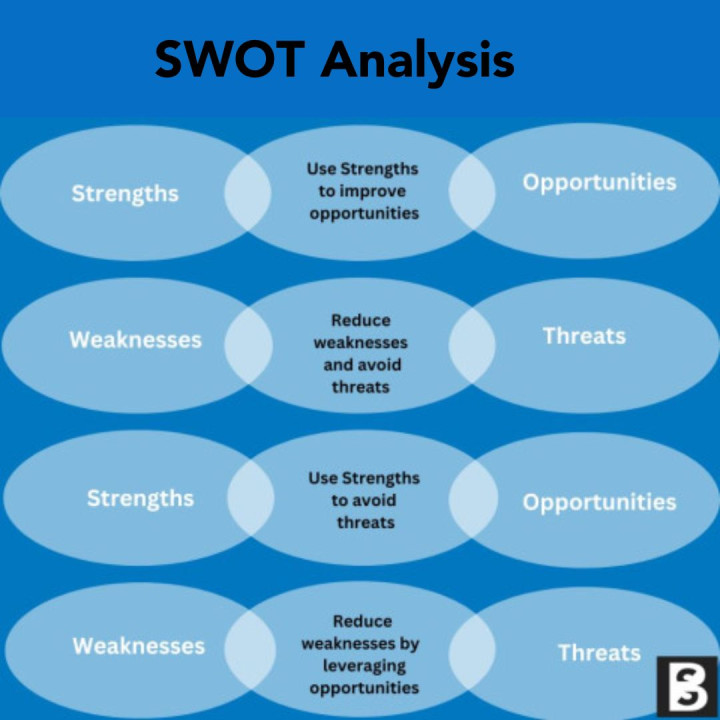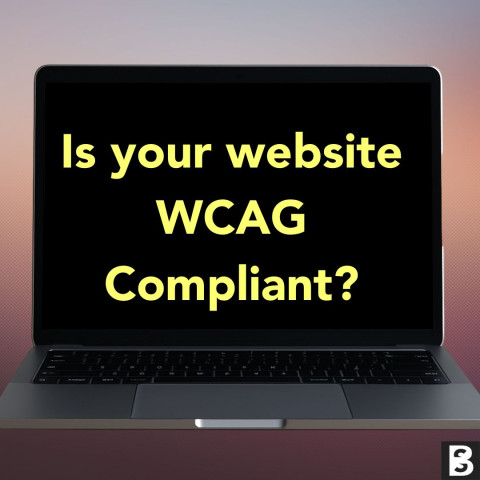New Business Start-up Checklist 30 Key Considerations
Contents
- Assess Your Strengths and Weaknesses
- Define the Need
- Evaluate Business Viability
- Branding, Name, Logo and email format
- Define Your Unique Selling Point (USP)
- Find a Business Mentor
- Pricing
- Ensure Your Business Will Be Profitable
- Determine the Finances Required
- Funding and Support Programmes
- Using Technology & Software
- Create a Business Plan
- Register Web Domains & Trademarks
- Selling Online
- Set Up Your Business Structure
- Set Up a Business Bank Account
- Arrange Business Insurance
- Register for Taxes
- Understand Tax-Deductible Expenses
- Create Your Website
- Create Social Media Accounts
- Marketing & Promotion
- Find & Manage Suppliers
- Operations and Logistics
- Environmental Responsibilities
- Data Protection & Cybersecurity
- Monitoring & Evaluating Business Performance
- Tracking & Managing Finances
- Find Suitable Premises
- Hiring the Right Employees
Introduction
Every business begins with an idea, but turning that idea into a successful venture requires more than just inspiration. You'll need careful planning, the right skills, essential resources, time, and even a bit of luck.
This guide will walk you through the early stages of building your business, serving as a roadmap to help you launch and manage your new venture
1. Assess Your Strengths and Weaknesses
If you’re starting a business on your own, you’ll need to master key skills to give your venture the best chance of success.
Assessing your abilities in areas like organisation, communication, finance, IT, and sales can help you determine whether you need additional training or support to effectively run your business.
For more information and how to carry out a SWOT Analysis go to: Business Plans Comprehensive Guide Part 2

2. Define the Need
Successful businesses thrive by meeting a clearly defined need within their target audience. Whether serving a local shopper or a corporate executive, your business must solve a specific problem to attract customers.
Even if problem-solving isn’t the first thing that comes to mind when thinking about your product or service, consider your business idea in terms of the challenges your customers face and how you can address them. This forms the core of your value proposition—the reason why customers should choose your offering over others.
Clearly defining the need for your business provides direction in product development, marketing, and overall strategy. Take a moment to articulate the specific need your business fulfils—you may discover areas that need refining to maximise its potential.
Examples of businesses defined by the needs they meet:
-
Vegan Food Truck
Provides quick, tasty, and sustainable food at outdoor events. -
Computer Repair Shop
Helps people regain access to their devices when technical issues arise. -
Mobile Landscaping Service
Offers convenient lawn care for those who lack the time or ability to maintain their own gardens.
Further information available at:
Business Plans Comprehensive Guide Part 4
3. Evaluate Business Viability
Before fully committing to your idea, research its viability by analysing your target market, identifying competitors, and ensuring your product or service stands out. Once you have a clear understanding, test your offering to confirm demand and make necessary refinements.
Key questions to assess viability:
a. Is there a market for my product or service?
Understanding your market is crucial for success. Identifying your target customers, analysing underserved needs,
and defining how your product or service fills those gaps will help you establish a strong market fit. A solid
product-market fit influences how quickly you can grow, acquire customers, and scale your business effectively.
b. Is my solution unique?
Even if demand exists, your business must offer something compelling to attract customers. Your Unique Selling
Proposition (USP), pricing, or service quality must distinguish you from competitors.
Ways to validate your idea:
-
Talk to friends and family
Present your idea, answer questions, and gather feedback. -
Use social media and forums
Engage with industry-related communities to understand customer perceptions. -
Find a Mentor
Connect with experienced professionals on LinkedIn or networking events for insights and guidance.
For more information about MVP (Minimal Viable Product) click here:
The Definitive Guide to Building a Minimum Viable Product (MVP)
4. Branding, Name, Logo and email format
Choosing the right business name can be instant or take time, but it’s a crucial decision that impacts how customers perceive your brand. Consider these tips when selecting a name:
-
Think about your customers
Your name should resonate with your target audience. -
Plan for growth
Avoid limiting names tied to a specific location if you plan to expand. -
Make it web-friendly
Check domain availability and ensure it looks good as a URL. -
Be clear and relevant
Your name should reflect your products or services without confusion. -
Stand out
Differentiate yourself from competitors with a unique and memorable name.

Your brand is more than just a logo—it’s your company’s identity, values, and the experience you create for customers. Strong branding builds trust and makes your business more recognisable.
For more information click here:
Business Plans Comprehensive Guide Part 1
Core Elements of Branding:
-
Brand Logo
A distinctive symbol that represents your brand across all platforms. Think Apple’s apple or McDonald’s golden arches. -
Brand Colours
Your colour scheme should reflect your identity and set you apart from competitors. -
Value Proposition
A clear promise of the value your business provides and why customers should choose you. This should be prominently displayed on your website and marketing materials. -
Tone of Voice
The personality of your brand in written and spoken communication. Whether professional, playful, or authoritative, consistency in tone builds recognition and trust.
Email formats - Gmail vs Domain email for Business
In the digital age, email remains a cornerstone of business communication. Choosing between a Gmail address and a domain-specific email address (e.g., [email protected]) is crucial for establishing your business's identity, credibility, and functionality.
This article explores the differences, benefits, and drawbacks of using Gmail versus a domain email for business purposes, helping you make an informed decision that aligns with your business needs.
For more information about email formats click here:
Gmail vs Domain email for Business
5. Define Your Unique Selling Point (USP)
To stand out, you need a Unique Selling Point (USP)—a clear statement that sets your business apart from competitors.
Try to sum up what makes your business unique in two sentences and memorise it. Your USP will be essential when pitching to investors, attracting customers, and shaping your marketing strategy.
6. Find a Business Mentor
Whether it’s a business advisor or a financial expert, having someone who can provide honest feedback is invaluable.
Seek out support from small business associations or enterprise development centres to find a mentor who can guide you through the early stages of your business.

7. Pricing
Setting the right price for your product or service is crucial. If your prices are too high, customers may be unwilling to buy; if they’re too low, you may struggle to make a profit and grow your business.
When determining your pricing strategy, consider factors such as competitor pricing, operating costs, and your target market’s willingness to pay.
Common Pricing Strategies to Consider:
-
Penetration Pricing
Starting with a low price to attract customers and gain market share, then gradually increasing prices as your business grows. -
Economy Pricing
Keeping costs low in manufacturing, marketing, and distribution to offer a competitively low price. -
Premium Pricing
Charging a higher price than competitors to position your product as higher quality or more desirable. -
Price Skimming
Setting an initially high price for new, innovative products, then lowering it over time as competitors enter the market. Common in tech industries. -
Price Anchoring
Offering high-priced premium products alongside lower-priced alternatives to make the latter appear better value. -
Bundle Pricing
Selling multiple products together as a package deal to create a perception of added value.
For more detailed information on Pricing Strategy visit:
Business Plans Comprehensive Guide Part 4
8. Ensure Your Business Will Be Profitable
Assess whether your business has the potential to be profitable in the long term.
Use accounting software to create profit and loss forecasts, and seek advice from an accountant or financial advisor to ensure your business model is financially viable.
9. Determine the Finances Required
Some businesses can be launched using personal savings, while others require significant investment. Calculate the total amount needed to get your business off the ground, covering everything from premises to living costs.
Be realistic about the fact that it may take some time before your business becomes profitable.
More financial information can be found at:
Business Plans Comprehensive Guide Part 4
10. Funding and Support Programmes
Starting a business is more accessible than ever, with many ventures requiring little more than a good idea, a laptop, and an internet connection. However, some businesses need initial capital to scale and monetise effectively.
If you require funding, research financial support options available to businesses in the UK. Potential sources of funding include:
-
Bootstrapping
Starting with minimal financial investment, allowing maximum independence but limiting available capital. -
Borrowing from Family or Friends
A flexible option, but one that can put personal relationships at risk. -
Business Loans
Banks offer loans based on the strength of your business plan, though they can be risk-averse with unproven ideas. -
Government Grants
Certain businesses may qualify for grants designed to stimulate specific industries or meet societal needs. Some grants are non-repayable, though they can be highly competitive. -
Equity Investment
Securing investment from venture capitalists in exchange for a share in your company. -
Crowdfunding
Launching an online campaign to attract funding from individuals who believe in your business idea.
By exploring these funding options, you can find the right financial support to turn your business idea into a reality.
DID YOU KNOW
As of 2024 there were 5.51 million small businesses in the UK
11. Using Technology & Software
Technology plays a crucial role in modern businesses, helping to streamline operations and improve efficiency. Consider how you will incorporate technology into your business, whether through laptops, tablets, or smartphones. If you’re unsure, consult local IT firms for guidance.
Choosing cloud-based software such as Google Docs or Microsoft 365 allows you to access important documents from anywhere, ensuring flexibility and security. Additionally, accounting software can help you manage financial records efficiently, minimising administrative work.
While technology alone won’t guarantee success, using the right tools can help automate tasks, consolidate data, and optimise business processes.
Useful Technology & Software for Businesses:
-
Accounting & Payroll Software
Automates financial management and payroll, freeing up time for business growth. Look into software such as Xero, QuickBooks, or Sage. -
Communication Tools
Platforms like Slack and Microsoft Teams support seamless collaboration, especially as your business expands. -
HR Software
Tools such as BambooHR or BrightHR can help manage employee schedules, leave requests, and performance tracking. -
Inventory Management
Software like Zoho Inventory or TradeGecko helps retailers track stock levels, orders, and supply chains. -
Marketing Tools
Platforms like Buffer and Hootsuite can streamline social media management, while Mailchimp can automate email marketing campaigns. -
Project Management & Productivity Tools
Trello, Asana, or Monday.com can help manage tasks, deadlines, and team collaboration. -
Customer Relationship Management (CRM)
If your business relies on high sales volumes, a CRM system like HubSpot or Salesforce will help track customer interactions and sales pipelines. -
Data Analytics
Google Analytics can provide valuable insights into website traffic and customer behaviour. -
Document Management
Cloud-based tools such as Google Drive or Dropbox allow for secure storage and easy access to shared documents. -
Wellness & Productivity Apps
To avoid burnout in the early stages, apps like Calm, Blinkist, RescueTime, and Pocket can help manage stress and maintain a work-life balance. -
AI Transcription Software
AI-powered transcription software such as Zoom AI have revolutionised the way businesses, media professionals, educators, and individuals convert speech to text. From basic speech recognition systems to advanced AI-driven solutions that summarise, analyse, and generate actionable insights, transcription technology has evolved significantly.
If you are considering using AI Transcription software read our 3 part article first:
Ai-Transcriptions Software Part 1
While off-the-shelf software can be useful for new businesses, certain types of businesses and specific growth stages may require bespoke software. solution.
Standard software solutions often come with limited features and functionality, whereas our tailored software is designed to align perfectly with your business needs and provide a future-proof solution.
12. Create a Business Plan
A business plan serves as a roadmap for your business, outlining your current position and future vision.
It helps keep you focused and organised during the critical development phase.

A typical business plan includes:
-
Market research
Understanding industry trends and customer demand. -
Customer analysis
Identifying your target audience and their needs. -
Competitor analysis
Evaluating market competition and how your business will stand out. -
Product or service information
Defining your offerings and value proposition. -
Organisational structure
Outlining team roles and business operations. -
Financial information
Budgeting, revenue projections, and funding requirements.
For more detailed information on the types and how to write a Business Plan go to:
Business Plans Comprehensive Guide Part 3
13. Register Web Domains & Trademarks
Having a website is essential, so check for available domain names and register one that aligns with your business. Trademarks should also be considered early on—speak to a legal professional to understand your rights and protect your brand.
Choosing a Domain Name:
-
Simple & Memorable
Choose a name that is easy to remember and type, avoiding complicated or hard-to-spell words. -
Keyword-Optimised
Including relevant keywords can improve search engine visibility, e.g. dufferin-coffee.co.uk instead of dufferin.co.uk. -
Appropriate Top-Level Domain (TLD)
While .com is the most common, alternatives like .co.uk, .store, or .photography can help reinforce your brand identity.
Registering a domain is relatively inexpensive, so secure it early to ensure brand consistency and prevent competitors from claiming it.
For more information:
https://bespokeuk.com/posts/bu...
14. Selling Online
If your business will be selling products or services online, ensuring a strong online presence is essential.
This means not only creating a smooth and efficient shopping experience for customers but also ensuring that your website is well-optimised for the platforms people use to find it.

At a basic level, two key areas to focus on are:
a. Choosing an E-Commerce Platform
Stay ahead of you E-commerce with our article about basket abandonment, cause, effects and solutions:
E-commerce Basket Abandonment Causes Effects and Solutions
Building an online store from scratch is possible, but most businesses opt for third-party e-commerce platforms to simplify operations. Whether you’re selling clothing, handmade crafts, or speciality foods, choosing the right platform will make managing your online store easier.
E-commerce platforms offer various features, including custom sales reports, payment processing, and marketing tools. To find the right one, consider:
-
Marketing tools
What built-in marketing features do you need from the outset? -
Customer experience
Do you need additional features beyond a basic shopping cart? -
Customisation
How much flexibility do you need to create the shopping experience you envision? -
Scalability
Which features will support your business as it grows?
If selling online is a crucial part of your business our Bespoke E-Commerce Platform can help you be successful.
Speak to us about our outstanding E-Commerce Software:
Ecommerce and Stock Control Software
b. Implementing Search Engine Optimisation (SEO) Strategies
SEO is one of the most cost-effective ways to drive traffic to your online store.
It involves optimising your website to improve visibility in search engine results.
Key SEO strategies for e-commerce include:
-
Using relevant keywords
Match keywords to search intent (e.g. “buy espresso machine” for product pages, “how to choose an espresso machine” for blog content). -
Optimising website performance
Ensure your site is fast-loading, mobile-friendly, and easy to navigate. -
Creating clean URLs
Use short, descriptive URLs that include relevant keywords. -
Avoiding duplicate pages
Prevent search engines from indexing multiple versions of the same product page.
Learn more about SEO and AI here:
How Does AI Boost SEO in Web Development
15. Set Up Your Business Structure
Choosing the right legal structure is crucial, as it affects taxation, liability, and how your business operates. Consulting an accountant can help determine the best option for you.
In the UK, common business structures include:
-
Sole Trader
Simple to set up but comes with personal liability for debts. -
Partnership
Shared responsibility between two or more individuals. -
Limited Liability Company (Ltd)
Offers limited liability, tax efficiencies, and greater credibility. -
Limited Liability Partnership (LLP)
Similar to a partnership but with limited liability for partners.
Define Directors & Responsibilities
If you are starting a limited company, you will need to appoint directors and define their responsibilities. If you are launching the business alone, you will be the sole director and take full responsibility for company decisions. However, if you have business partners, you must clearly outline their roles and obligations.
For more information go to:
Business Plans Comprehensive Guide Part 3
16. Set Up a Business Bank Account
Keeping business and personal finances separate is essential. Even if you are a sole trader, using a dedicated business account simplifies tax reporting and financial management.
When choosing a business bank account, consider:
-
Bank charges
Look for competitive fees and transaction costs. -
Facilities & support
Check for online banking, customer service, and additional features. -
Perks for new businesses
Some banks offer cashback, fee-free periods, or free accounting software.
If you register a limited company, a separate business account is legally required. A dedicated account also helps build a business credit rating, which can be beneficial if you seek funding in the future.
DID YOU KNOW
Small and medium-sized enterprises (SMEs) accounted for 99.9% of the UK business population at the start of 2024, with 99.2% being small businesses with fewer than 50 employees. Source: gov.uk
17. Arrange Business Insurance
Even the smallest businesses need insurance to protect against risks. Speak to a broker to find the most suitable coverage for your industry.
Common types of business insurance include:
-
Public liability insurance
Covers claims for injury or damage caused to third parties. -
Professional indemnity insurance
Protects against claims of professional negligence. -
Product liability insurance
Covers claims related to faulty or harmful products. -
Property & contents insurance
Protects business premises and equipment from damage or theft. -
Business interruption insurance
Covers loss of income due to unforeseen disruptions.
18. Register for Taxes
Your tax obligations will depend on your chosen business structure, so it is important to register with HMRC as soon as possible.
- Sole traders must register for Self-Assessment and submit annual tax returns.
- Limited companies must register for Corporation Tax and file accounts with Companies House.
- VAT registration is required if your turnover exceeds the current VAT threshold (£90,000 as of 2024).
- PAYE registration is necessary if you employ staff.
19. Understand Tax-Deductible Expenses
Many business expenses can be offset against tax, reducing your overall tax liability. Speak to an accountant to ensure you claim all eligible deductions.
Common tax-deductible expenses include:
- Office rent and utilities
- Equipment and software purchases
- Business travel and accommodation
- Marketing and advertising costs
- Internet, phone, and professional subscriptions
Keeping clear financial records from the start will help you stay on top of tax obligations and avoid any surprises at year-end.
DID YOU KNOW
In January 2025, Lloyds was ordered to pay a £1 billion tax bill after losing a legal dispute with HM Revenue & Customs (HMRC). Source: ft.com
20. Create Your Website
Use the website domain name you have already registered if possible. Platforms like Squarespace, WordPress, and Wix allow you to build a website quickly and efficiently, with the option to update and improve it later.
What are the website colour trends for 2025? Find out here: Web Design Colour Trends for 2025
a. The Importance of a Website
Your website acts as your digital storefront, often being the first impression customers will have of your business. Even a simple site with an ‘About Us’ page and an appointment booking form can help establish credibility.
b. Creating Engaging Content
High-quality written content, along with images, graphics, and videos, helps capture attention and position your brand as an industry expert.
c. Implementing SEO
To increase visibility in search results, research and incorporate relevant keywords into your meta tags, titles, and descriptions. Optimising your site for fast loading times and mobile compatibility is also essential.
d. Utilising Local Listings
Many people search for businesses by typing "[business type] near me" into Google. To take advantage of this, list your business on platforms like Google Business Profile and Yelp, ensuring your details are accurate and up to date.
e. Alternatives to a Full Website
If budget constraints prevent you from building a full website, consider creating a holding page with essential business information and contact details.
Customers don’t want a slow website, find out here the causes and solutions: Why Websites Load Slow Simple Explanations
22. Marketing & Promotion
a. Encourage Online Promotion
Ask friends, family, and business connections to share your website and social media pages to increase visibility.
b. Develop a Marketing Strategy
To attract customers, your business must be visible and memorable. A strong marketing plan should outline:
-
Marketing Goals & Objectives
Define realistic, measurable targets, such as increasing sales, gaining a specific number of customers, or securing press coverage. -
Target Audience Profile
Understand who your ideal customers are, including demographics, income level, location, and social media habits. -
Marketing Tactics
Decide on the best strategies for your business, whether SEO, pay-per-click (PPC) advertising, social media marketing, email campaigns, or traditional advertising (TV, radio, print, etc.). -
Timeline & Budget
Outline a schedule for marketing activities, ensuring you allocate resources efficiently and avoid overspending.
c. Traditional vs Digital Marketing
Will you rely more on traditional channels (such as print advertising and networking events) or digital marketing (such as social media and Google Ads)? Many businesses benefit from a hybrid approach, using both methods strategically.
d. Building Customer Loyalty & Retention
Keeping customers engaged and coming back is just as important as attracting new ones. Consider:
- Customer feedback surveys to identify areas for improvement.
- Loyalty programmes, such as discounts or rewards for repeat purchases.
- Exceptional customer service, ensuring quick responses and efficient problem-solving.
e. Networking & Industry Events
Attending trade shows, business networking events, and industry conferences provides excellent opportunities to:
- Meet potential clients and partners.
- Increase brand awareness.
- Stay informed about market trends.
For more information: Business Plans Comprehensive Guide Part 4
23. Find & Manage Suppliers
Strong supplier relationships can impact product quality, efficiency, and customer satisfaction. Choosing the right suppliers is crucial, especially if you're launching a product-based business.
Key Considerations When Selecting Suppliers:
-
Shared Values
Ensure suppliers align with your business ethics and sustainability goals to avoid future conflicts. -
Mutual Respect
Understand your suppliers’ processes and comply with their invoicing and order submission requirements to maintain a smooth working relationship. -
Clear Communication
Foster transparency, allowing both parties to provide constructive feedback and resolve issues quickly. -
Forward Planning
Anticipate supply chain challenges and create contingency plans to avoid disruptions. - Building strong, long-term relationships with suppliers can result in better pricing, faster deliveries, and priority service when demand spikes.
24. Operations and Logistics
No business checklist is complete without considering the operational aspects that keep everything running smoothly. Behind every customer interaction, you need a reliable supply chain and operational framework to support your business.
Key Considerations:
-
Procuring Suppliers & Managing Inventory
Suppliers have a direct impact on product quality, efficiency, and customer satisfaction. Vet potential suppliers carefully and implement a structured inventory management system. -
Streamlining Supply Chain & Logistics
Even after securing reliable suppliers and couriers, continuous improvement is key. Regularly assess efficiency in your supply chain and optimise processes to prevent disruptions. -
Establishing Efficient Processes & Workflows
Clearly defined Standard Operating Procedures (SOPs) help maintain consistency, reduce inefficiencies, and ensure smooth day-to-day operations. -
Implementing Customer Service Protocols
A strong customer service strategy ensures positive customer experiences. Set clear guidelines for handling queries, complaints, and interactions to build trust and loyalty.
25. Environmental Responsibilities
Incorporating sustainability into your business benefits both the environment and your brand reputation.
Consumers increasingly favour businesses that adopt eco-friendly practices.

Ways to Reduce Your Environmental Impact:
-
Assess Environmental Impact
Identify areas where you can reduce waste or use sustainable materials. -
Embrace Energy Efficiency
Implement policies such as switching off unused equipment and opting for energy-efficient lighting. -
Recycle & Reduce Waste
Provide clear instructions for waste disposal and minimise packaging by using eco-friendly materials.
For more detailed information about Business Sustainability read our 4 part guides: Business Sustainability The Benefits and Challenges
26. Data Protection & Cybersecurity
Data security is critical—companies that lose customer data risk losing customer trust and business.
-
Understand GDPR Compliance
The General Data Protection Regulation (GDPR) protects personal data. Ensure your business follows legal guidelines on data collection and processing. -
Assess Data Collection, Storage & Usage
Obtain explicit customer consent before collecting personal information, and store it securely to prevent leaks. -
Implement Cybersecurity Measures
Use encryption, firewalls, and secure cloud storage to protect sensitive data. Regularly update systems to guard against cyber threats. -
Respond to Data Requests
Be prepared to handle customer requests to access or delete their data, in compliance with GDPR regulations.

Can you afford to be hacked? Read our article on how to avoid it:
Can You Really Afford a Cyberattack or Data Breach
27. Monitoring & Evaluating Business Performance
Tracking business performance helps you make data-driven decisions and improve efficiency.
-
Set Key Performance Indicators (KPIs)
Define measurable targets, such as customer acquisition, website traffic, and sales growth. -
Analyse Business Metrics
Use tools like Google Analytics to monitor sales, customer behaviour, and marketing effectiveness. -
Adapt & Adjust Strategies
Regularly review performance data and refine your marketing, operations, and customer service strategies.
28. Tracking & Managing Finances
Proper financial management ensures business stability and growth.
-
Know Your Break-Even Point
Identify how much revenue is needed to cover expenses. -
Maintain an Emergency Fund
Prepare for unforeseen economic challenges. -
Use Accounting Software
Tools like Xero, QuickBooks, or help track income, expenses, and tax obligations. -
Manage Cash Flow Effectively
Ensure a healthy balance of income (accounts receivable) and expenses (accounts payable) to keep your business financially stable.
For more information: Business Plans Comprehensive Guide Part 6
29. Find Suitable Premises
Your choice of business premises depends on your operations, budget, and future growth plans.
-
Home-Based Business
If working from home, ensure compliance with zoning laws, tax regulations, and insurance requirements. -
Commercial Premises
Consider location, rent, transport links, storage, and customer accessibility before committing to a lease. -
Privacy Considerations
If running a limited company from home, be aware that your address will appear on Companies House public records unless you use a registered agent service.
30. Hiring the Right Employees
Bringing the right people into your business is key to success.
Understand Employment Laws – Ensure contracts, payroll, and workplace policies comply with UK employment laws.
-
Recruit Suitable Candidates
Create detailed job descriptions and establish a structured interview process. -
Manage Payroll & Employee Benefits
Accurately record salaries, bonuses, and benefits, ensuring compliance with tax regulations. -
Create a Positive Work Environment
A strong workplace culture improves employee retention, productivity, and job satisfaction.
Hiring new employees can be both costly and time-consuming. Our customers have saved time, money, and improved efficiency by using our Bespoke Software, reducing their reliance on additional staff.
Get in touch today to discover how we can support you and your business. Contact Us
DID YOU KNOW
Over the past 25 years, small businesses have been responsible for 2 out of every 3 jobs created in the UK.
Keep Challenging Yourself
Successful entrepreneurs persist when others would quit. Your attitude, adaptability, and decision-making will determine your success.
While this business start-up checklist provides essential steps, success ultimately depends on your commitment, resilience, and continuous learning.
Stay flexible, embrace challenges, and go for it!
New Business Checklist
Action |
Applicable Yes or No |
Actioned Yes or No |
Comments |
|
1 |
Assess Your Strengths and Weaknesses |
|||
2 |
Define the Need |
|||
3 |
Evaluate Business Viability |
|||
4 |
Branding, Name & Logo |
|||
5 |
Define Your Unique Selling Point (USP) |
|||
6 |
Find a Business Mentor |
|||
7 |
Pricing |
|||
8 |
Ensure Your Business Will Be Profitable |
|||
9 |
Determine the Finances Required |
|||
10 |
Funding and Support Programmes |
|||
11 |
Using Technology & Software |
|||
12 |
Create a Business Plan |
|||
13 |
Register Web Domains & Trademarks |
|||
14 |
Selling Online |
|||
15 |
Set Up Your Business Structure |
|||
16 |
Set Up a Business Bank Account |
|||
17 |
Arrange Business Insurance |
|||
18 |
Register for Taxes |
|||
19 |
Understand Tax-Deductible Expenses |
|||
20 |
Create Your Website |
|||
21 |
Create Social Media Accounts |
|||
22 |
Marketing & Promotion |
|||
23 |
Find & Manage Suppliers |
|||
24 |
Operations and Logistics |
|||
25 |
Environmental Responsibilities |
|||
26 |
Data Protection & Cybersecurity |
|||
27 |
Monitoring & Evaluating Business Performance |
|||
28 |
Tracking & Managing Finances |
|||
29 |
Find Suitable Premises |
|||
30 |
Hiring the Right Employees |

Mailchimp Alternatives Guide 2025
Is Mailchimp still the best FOR EMAIL MARKETING? Or are UK businesses find...
5 min read

The Hidden Cost of Poor System Integration
Why Poor Integration Between Systems Is Holding Your Business Back And How...
8 min read

Admin Overload: The Silent Business Killer
The cost of manual, repetitive admin tasks In countless small and medium-s...
3 min read


